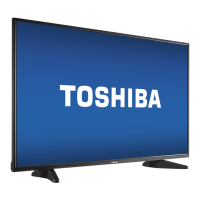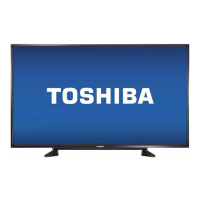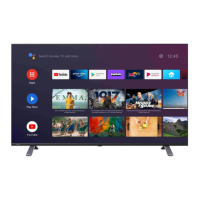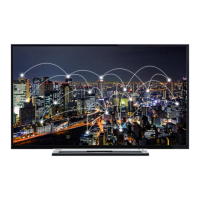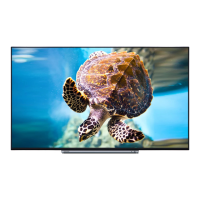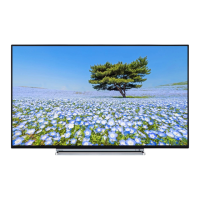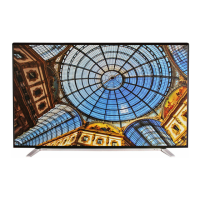(4:3aspectratio)andthewide-screenformat(16:9aspectratio).This
featureisavailablefor1080idigitalbroadcastsand480p/480iDVD
signalsconnectedtotheColorStreamHD1andHD2jacks.
Selecting the image shape
1. Make sure the ColorStream HD1 or HD2 mode is selected. (See
page 44 for details.)
2. Press PIC SIZE repeatedly to select either Normal, Letterbox, or
Compression image shape, as described below.
Note: Themessage "Not Avai/ab/e" wi//appear when the P/C
SIZE button is pressed in the mode other than the
ColorStream HD ] or HD2.
HD1 IMAGE SHAPE
0:NORMAL
I:LETTERBOX
2:COMPRESSION
While the above menu is on the screen, you can select the desired
picture size by pressing the corresponding number button (0-2).
Normal
Tile Normal picture size displays tile picture in tile conventional 4:3
aspect ratio. The picture is stretched vertically to fill the screen.
Letterbox, Compression
The Letterbox and Compression modes display a wide-screen (16:9)
picture with bars at the top and bottom of the screen. The picture
retains its true proportion.
Letterbox (recommended ,node):
• Picture is horizontally stretched, with bars at the top and bottom.
• Lower picture quality than in the Compression mode because of a
reduction in the scanning lines.
• Slightly lower chance of permanently
engraining stationary patterns on the
picture tube than in the Compression
mode.
Compression:
• Picture is vertically compressed,
with bars at the top and bottom.
• Better picture quality than in the
Letterbox mode because of more
effective use of scanning lines.
Letterbox and Compression
modes have bars at top and
bottom of screen. See "Notice of
possible adverse effects on TV
picture tube," at right.
• Greaterchance of permanently engraining stationary patterns on
the picture tube than in the Letterbox mode, since there is no
raster in the bars at top and bottom.
Note:
You can also change the image shape using
the menu system. Select IMAGE SHAPE
HD] or HD2 in the THEATER menu.
®®®®®@
O THEATER
wow
SRS 3D ON
FOCUS ON
TruBass HIGH
If a &ed (non:moving) Pattern remains
on the TVscreenfor long periods of time,
the image can become permanently
engrained in the picture tube.See page 2
for details.
31

